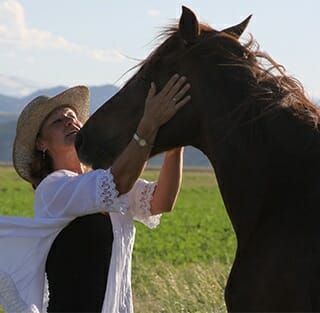Somatic or Body-centered Psychotherapy
How does Somatic Experiencing work?
Animals easily recover from trauma.
 A bird hit my front window this afternoon with a startling and bone-crushing thud. I found it lying where it fell atop a leafless bush, in plain sight and defenseless, neck turned nearly upside down to its body. Its eyes were open and staring while its whole body was rhythmically moving in a kind of panicked panting.
A bird hit my front window this afternoon with a startling and bone-crushing thud. I found it lying where it fell atop a leafless bush, in plain sight and defenseless, neck turned nearly upside down to its body. Its eyes were open and staring while its whole body was rhythmically moving in a kind of panicked panting.
I watched from six feet away, to avoid adding to its trauma. After three minutes, it righted its head, and its eyes became more focused. After seven minutes, it started looking around and the panting ceased. At 13 minutes it suddenly jumped onto the sidewalk and hid underneath the bush. Now safe from predators, it stayed hidden there quietly for an hour, then flew away with nary a sign of injury.
That bird won’t be needing a chiropractor or psychotherapist. What does it know that we don’t about quickly recovering from life-threatening trauma?
Fight or flight?
Imagine you are walking in a park barefoot on a summer day. You are relaxed and enjoying the warmth and leisure. Suddenly, you feel a stabbing pain in your right foot. As you look down, you see a lot of blood.
In an instant, over 1,500 physiological changes take place to save your life. Your attention goes to your foot as your nervous system responds with a ”fight-flight” reaction. Gone is awareness of the warm sunshine and pleasant thoughts. Your digestion and immune system go on hold. Those won’t be needed if you don’t get that bleeding stopped soon. The pain is soon numbed so you can focus on whatever is necessary to save your life.
The mind becomes clear and fast. Its job is to identify what is wrong and how to fix it. You quickly assess the seriousness of the injury, whether you need help, who is available, and how to stop the bleeding.
Your ability to ask, “What is wrong and how can I fix it?” works well. Otherwise, you wouldn’t be alive to read this. Just like that bird, you are hard-wired with this life-saving response to threat.
You get help stopping the bleeding and bandaging the wound. Once safe and back with trusted companions, you might allow the shock of the injury to be felt, perhaps by telling the story, shaking, trembling, or shedding tears of relief. Perhaps, like the bird, you know intuitively what to do, so you take time to quietly rest. Then you know you’re going to be okay. Those 1,500 physiological changes reverse themselves, and digestion and immune functions are restored.

We social animals need support.
Five-year-old Anya comes running and sobbing in from the backyard. Her Mother holds her. For a while she is inconsolable and beyond words. Then, between cycles of crying, she tells how her friend Annie grabbed her favorite doll. When Anya tried to get it back, Annie pushed her down hard.
Telling the story brings back the strong feelings again. Anya’s body shakes uninhibitedly, and her legs kick in anger. She sobs deeply again for a few breaths, then cuddles into her Mother’s lap. After each wave of intense feeling, she is calmer. Her Mother listens, comforts, and holds Anya. A short time later, Anya loses interest in the incident and is happy to say “yes” when her Mom asks if she’d like to help fix dinner.
Anya’s Mother “resourced” her by creating safety, that is, by soothing Anya and helping her to feel safe and accepted. Anya felt her Mother’s warmth against her own body and the pleasure of her Mother’s calming voice. This allowed Anya’s innate healing response to move through her body. A discharge of powerful feeling was completed. Her anger, sense of betrayal, and fear were discharged with shaking, kicking, and tears. Because of that, this is not likely to be an incident which Anya carries as a scar into a troubled adulthood.
But what if your parents weren’t good at this?
As a child, you may not have been held like Anya or allowed to sob so deeply. Modern life in our culture is not always ideal and supportive. Many have been overwhelmed by injury, abuse, or prolonged fear. You’re a rare person if you escaped the scars of dysfunctional families, childhood abuse or unkindness, schoolyard bullies, car crashes, loss of love, illness, violence, and the threat of nuclear holocaust.
In situations which felt threatening, our minds focused intensely on stopping the threat or pain. But what if the pain can’t be stopped? What if the threat is too big, too fast, lasts too long, or is too often repeated?
Eventually, our nervous system is overwhelmed by feelings that are too painful or scary. To survive, we “freeze,” numbing out sensations and feelings that weren’t helpful to saving our lives at that moment.
Imagine a war setting. When the bombing raid comes, the sirens warn everyone to take cover. Afterwards, the sirens sound the “all-clear” signal, and people know the raid is over allowing them to come out.
But what if the all-clear signal is never sounded. People would still be fearful and might remain in underground shelters a long time.
In the case of personal and childhood trauma, if support and safety never comes, then, in effect, the all-clear signal never sounded. The nervous system remains either frozen or on alert. Our minds may still be searching endlessly for “what is wrong and what can I do to stop the fear or pain?”, which constantly re-triggers the fight-flight response in our bodies. But the core problem is that the nervous system has never gotten the message that “the war is over.”
Conventional “talk therapy” has very little usefulness here. We could explore with ideas and words all day long about your history, what happened, who did what to whom and when. That won’t give relief to your poor, frazzled nerves, still on high alert, just trying save your life from events that happened and passed a long time ago.

How is Somatic Experiencing different?
Somatic means “relating to the body,” so Somatic Experiencing simply means “feeling and sensing through the body” instead of thinking about our experiences.
Our higher, logical, thinking brains are valuable and powerful; but if we want to release the stuck anxious energy of past trauma, we need to come back into our bodies and our sensations.
Why would I want to be more aware of my body feelings and sensations?
If you have experienced trauma, returning to body awareness may at first seem very difficult or unappealing. You might be drawn instead to distracting thoughts, impatience, or uncomfortable memories. But the benefits of this kind of growth are stunning and life-changing!
How does a bear know to avoid poisonous berries? How does a dog know who is untrustworthy? Why does one of your friends attract a wonderful mate? How did someone know to avoid that mountain pass the night of the avalanche? How do some people know just the right thing to say in a job interview? These animals and people still have access to the instincts and feelings that guide them naturally to healthy choices. This is your birthright!
The bird which flew into the window needed a quiet hour alone under a bush to recover from a blow which nearly broke its neck. It was totally connected to its body and listening deeply to genetic, sensory, and intuitive wisdom about how to heal.
If you have not done what that bird did but have tried to “figure out” your healing, or altogether avoid dealing with it, then your nervous system, decades later, may be still chronically on high alert, ready for danger. Decades of frazzled nerves, overworked glands, and the reduced functioning of digestive and immune systems are the root causes of a long list of syndromes, diseases, and dysfunctions epidemic in our culture today.

How does Somatic Experiencing help?
In a Somatic Experiencing session, we spend a good portion of each session bypassing the thinking mind while the most ancient part of our brain, the part that knows how to heal from trauma like animals do, is directly addressed through the language of images and sensation. With that encouragement, creative and comforting images and experiences arise spontaneously and naturally.
This will help you calm and also restore digestion, immune system, glands, and those poor, frazzled nerves. Like the resilient bird, you are releasing the trauma.
Learning to stay present to sensations is a main key to healing trauma or PTSD. Keeping your attention in the body will usually diminish physical or emotional pain within minutes.
The principles are simple but challenging in the beginning to practice alone. For many of us, our worst traumas involved feeling very alone or abandoned. So an important major part of what we do in Somatic Experiencing sessions is, with my supportive presence, to find practical methods which help you to enjoy these exciting new discoveries and experiences.
As you use these tools, first with my help, then increasingly on your own, your nervous system remembers what safety feels like. You’ll be able to explore the world with less fear and more curiosity and joy. Your body knows exactly when it’s time to come out from underneath your bush…and fly!
When you are ready to try Somatic Experiencing for yourself, contact me for a free 30-minute consultation. We’ll get to know each other a bit, and I’ll help you understand how Somatic Experiencing can help you where you specifically want to make changes in your life. Call me today: 970-670-0261
